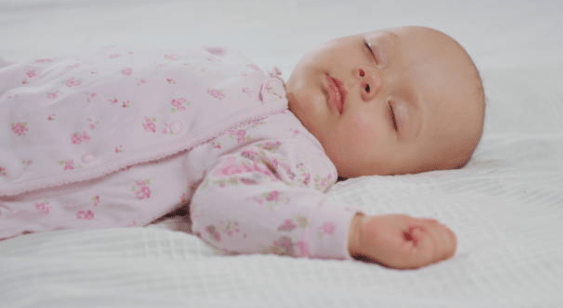Did you know that the leading cause of injury-related death for infants under the age of one is by suffocation or strangulation in an adult bed? Studies have shown that the risk for infant death by suffocation is up to 40 times greater when placed in an adult bed than in a crib.
While the unknown causes that contribute to Sudden Infant Death Syndrome (SIDS) cannot be completely prevented, creating a safe sleep environment can protect your baby from suffocation and strangulation risk and decrease the likelihood of SIDS.
Safe sleep focuses on three critical areas, which the American Academy of Pediatrics refers to as the ABCs of Safe Sleep. Babies sleep safest Alone, on their Backs, and in Cribs. A safe sleep environment encompasses the following:
Alone: Do not put pillows, blankets, crib bumpers, toys, soft objects or loose bedding in a baby’s sleeping area. It is also critical to ensure strings, like window blind cords, are far out of the baby’s reach.
Backs: In 1992, the American Academy of Pediatrics began recommending that all babies be placed on their backs to sleep. Deaths from Sudden Infant Death Syndrome (SIDS) drastically declined after this recommendation. “Back to sleep” should always be followed unless under direction from your child’s pediatrician.
Cribs: Babies should never sleep in adult beds or on couches and recliners, with or without a caregiver. The Florida Department of Health’s “Child Abuse Death Review Annual Report” found that a staggering 58.8% of infant sleep-related deaths in 2019 took place in an adult bed. Bed sharing is a common practice that can have tragic consequences. While some believe sleeping with their baby creates a special bond, the risk far outweighs the benefits.
Safe Sleep experts recommend keeping the child in the same room, close to the parental bed, in a crib, portable crib, or bassinet for at least the first year of life. Mattresses should be firm, and the only bedding should be a snug fitting sheet.
Beyond the ABCs of Safe Sleep, the American Academy of Pediatrics and other health experts recommend the following to reduce SIDS: breastfeeding, offering baby a pacifier, using portable cribs when traveling, keeping baby’s room cool, not smoking near baby, not letting baby get overheated, and ensuring caretakers follow all safe sleep rules.

